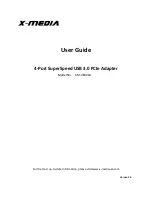
20
Introducing Fabric OS CLI procedures
There are several methods that you can use to configure a switch. These are listed with their respective
documents:
•
Command Line Interface (CLI)
• A telnet session into logical switches
• A telnet session into active and standby CPs for Director class switches
• A serial console, including active and standby CPs for Director class switches
• An optional modem, which behaves like a serial console port
For CLI details, refer to the
Fabric OS Command Reference Manual
.
•
Web Tools
For Web Tools procedures, refer to the
Web Tools Administrator’s Guide
.
•
Fabric Manager (optional management application, purchase separately)
For Fabric Manager procedures, refer to the
Fabric Manager Administrator’s Guide
.
•
A third-party application using the API
For third-party application procedures, refer to the third-party API documentation.
About the CLI
Fabric OS CLI is the complete fabric management tool for HP StorageWorks SANs that enables you to:
•
Access the full range of Fabric OS features, based on license keys.
•
Configure, monitor, dynamically provision, and manage every aspect of the SAN.
•
Configure and manage the fabric on multiple efficient levels.
•
Identify, isolate, and manage SAN events across every switch in the fabric.
•
Manage switch licenses.
•
Perform fabric stamping.
To manage a switch using telnet, SSH2 session into SNMP, or Web Tools, the switch must be connected to
a network through the switch Ethernet port (out of band) or from the Fibre Channel (in band). The switch
must be configured with an IP address to allow for the network connection. Refer to the installation guide
for your specific switch for information on physically connecting to the switch.
You can access switches from different connections, such as Web Tools, CLI, and API. When these
connections are simultaneous, changes from one connection might not be updated to the other, and some
modifications might be lost. When simultaneous connections are used, make sure that you do not overwrite
the work of another connection.
In a mixed fabric containing switches running various Fabric OS versions, you should use the latest-model
switches running the most recent release for the primary management tasks. The principal management
access should be set to the core switches in the fabric. For example, to run the separately purchased Secure
Fabric OS
®
option, use the latest-model switch as the primary FCS, the location to perform zoning tasks,
and the time server.
A number of management tasks are designed to make fabric-level changes; for example, zoning
commands make changes that affect the entire fabric. When executing fabric-wide configuration tasks,
allow time for the changes to propagate across the fabric before executing any subsequent tasks. For a
large fabric, it might take a few minutes.
Содержание AE370A - Brocade 4Gb SAN Switch 4/12
Страница 1: ...HP StorageWorks Fabric OS 5 2 x administrator guide Part number 5697 0014 Fifth edition May 2009 ...
Страница 18: ...18 ...
Страница 82: ...82 Managing user accounts ...
Страница 102: ...102 Configuring standard security features ...
Страница 126: ...126 Maintaining configurations ...
Страница 198: ...198 Routing traffic ...
Страница 238: ...238 Using the FC FC routing service ...
Страница 260: ...260 Administering FICON fabrics ...
Страница 280: ...280 Working with diagnostic features ...
Страница 332: ...332 Administering Extended Fabrics ...
Страница 414: ...398 Configuring the PID format ...
Страница 420: ...404 Configuring interoperability mode ...
Страница 426: ...410 Understanding legacy password behaviour ...
Страница 442: ...426 ...
Страница 444: ......
Страница 447: ......
















































